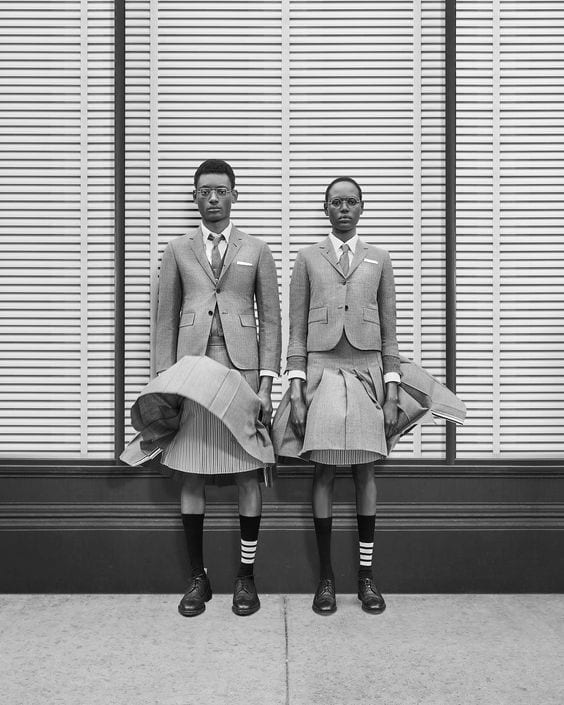Thom Browne FW18 Campaign
I chose this campaign to analyze; one reason because Thom Browne has been a longtime favorite of mine and the other is because I feel like this ad is very relevant today. Thom Browne has been breaking gender norms for a long time; executing tailored suits for women and making wedding dresses for men. Most notably, in his SS18 collection, he named it “Why Not?” in which he created an entire collection originally designed for women but casted all male models and ended up with a lineup of men in skirts, shorts, dresses, tulle, etc; clothing that was believed to be socially meant and acceptable to be seen on women. One thing that I found very interesting in Thom Browne’s work (including this campaign) is that he an excellent tailor and typically, suits are meant for men; however, he addresses gender issues by replacing typical cigarette suit pants for a pencil skirt; typically meant for women. The model therefore retains the aspect of a men’s suit, but the image is made more jarring since we see a skirt with the suit instead of pants. This raises the most commonly heard debates of the idea of men in skirts. “From a performative perspective, gender can be described as a way of repeatedly styling the body; this styling is regulated by cultural discourse, but it becomes part of the ongoing experience of fashioning the gendered body on a personal and social level, as well.” Kaiser notes just how big of a role culture plays in our perspective on gender dressing. Our gender is a product of biology in which we cannot control what gender we are born into. Our modern culture has developed a system that determines how we should dress based on our gender; and so with that notion rooted in our minds; we fashion our bodies instinctively based upon these norms. The archetype of gender roles are so rooted in our brains that Kaiser pointed out that “gender is a way of repeatedly styling the body”; her use of gender as a verb instead of a noun just shows how much of a social duty it is for men and women. I love this campaign because it does not only show the effect of men in women’s clothes but vice versa as well. The image of a women in a suit was no accepted until around the 1950s. It’s refreshing and hopeful seeing how fluid gender has become these days; although there are definitely still obstacles blocking people from being themselves but with campaigns like this; positive change is on the way.
